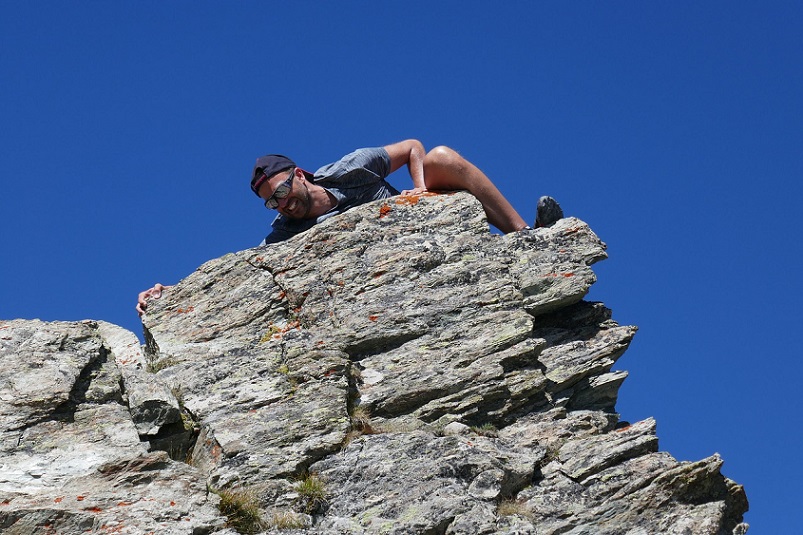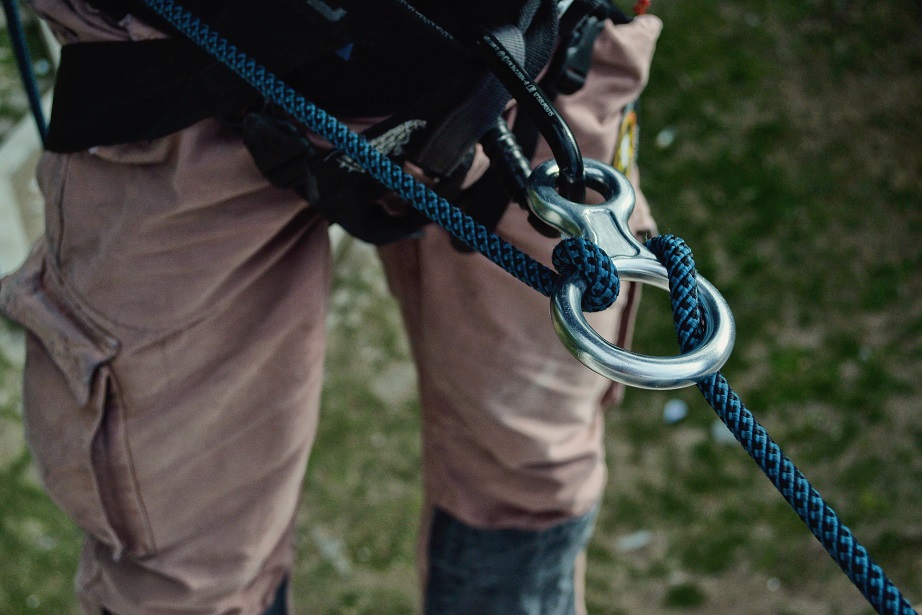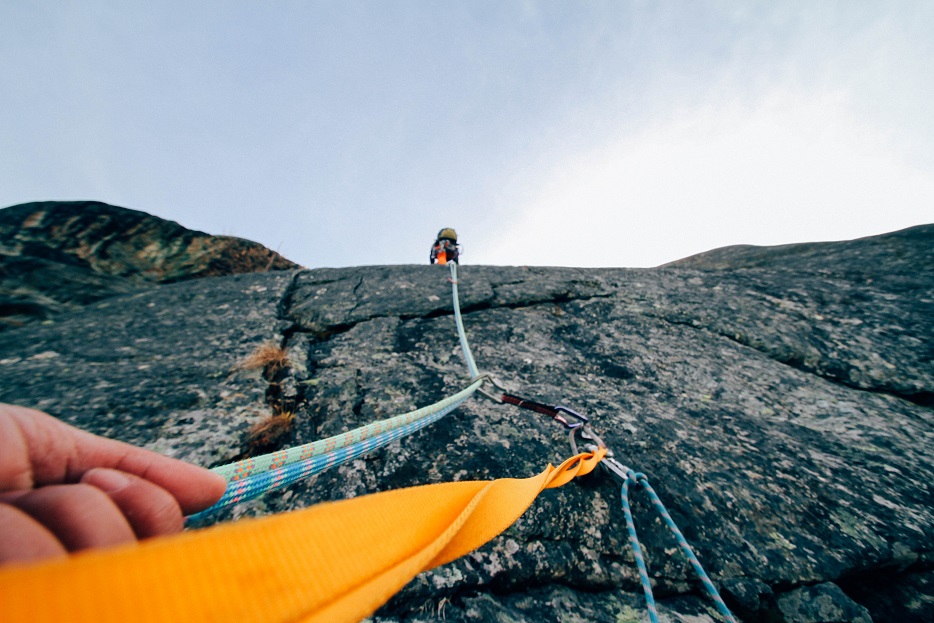Few climbing techniques are as useful an addition to your climbing arsenal as the heel hook is.
And in today’s guide, you’re going to learn exactly how to heel hook!
It’s a technique that can skyrocket your climbing level, unlock new ways of overcoming the crux of a boulder, and it is quite certainly one that will enable you to overcome certain routes that you would not be able to summit otherwise.
So if you don’t know how to use the heel hook yet, or you’re looking to improve it or expand your understanding of how it works, keep on reading!
Without further ado, let’s jump into the basics of the heel hook.
What is the heel hook in a nutshell
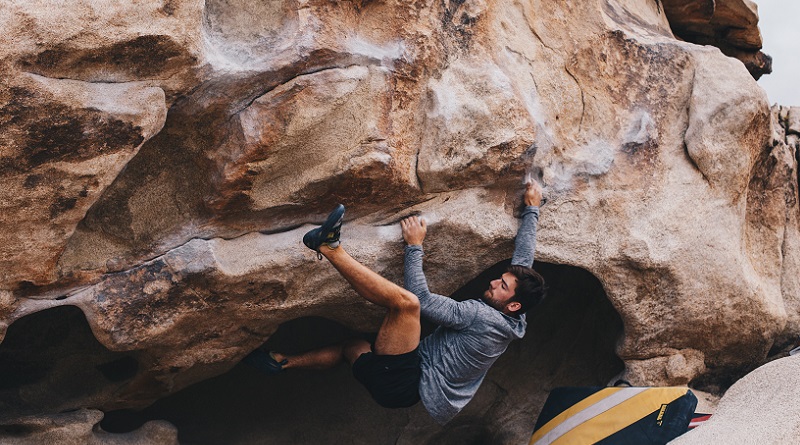
The heel hook is a very straightforward and easy to grasp technique. What it boils down to is this: you use your heel to alleviate weight from your arms, by placing it on a foothold or ledge.
It doesn’t matter how high you place your heel. Oftentimes, heel hooks are placed at head level or even above. This is partly because the key feature of the heel hook: it is a pulling motion, not a pushing one.
So using the heel hook basically does one important thing for you: it allows you to pull with your leg, while otherwise your feet are mainly used to push. It’s essentially like having three arms!
How to heel hook
Heel hooking is done in the following manner:
- Find a ledge, hold or ridge on which you can place your heel. Usually the heel hook is placed in a high position relative to the rest of your body.
- Place your heel firmly on the hold.
- push your toes further away from your body. This will increase the downward pressure on your heel.
- Flex your leg muscles to start pulling your heel down
- Now the pressure is released from your arms. Either use this to rest, or to make your next move.
- Optionally, shift your center of gravity above the heel hook, resulting in it becoming a regular foothold.
Key properties of the heel hook
- It can shift your center of gravity
- It pulls your core closer to the wall
- It can release tension from your arms
- It allows you to rest your arms
Tips for mastering the heel hook
- Maximize surface contact
- When possible, optionally push your toe against a vertical surface to increase friction and stability
- Try to pull your hips as close to the wall as possible by bending your leg
What to watch out for / Pitfalls of the heel hook
- Using a heel hook releases pressure from your arms. This allows you to rest, however, it can also make you lose your grip and have your hand slip off a sloper that needs the downward pressure to stick.
- Make sure to tighten your climbing shoes properly. Heel hooks are a great way to lose your climbing shoe. Now this is bad enough on a boulder, but it is especially bad to see your climbing shoe quickly shrink to a tiny distant dot as you are just approaching the midpoint of a multi-pitch.
Why the heel hook should be your bread and butter
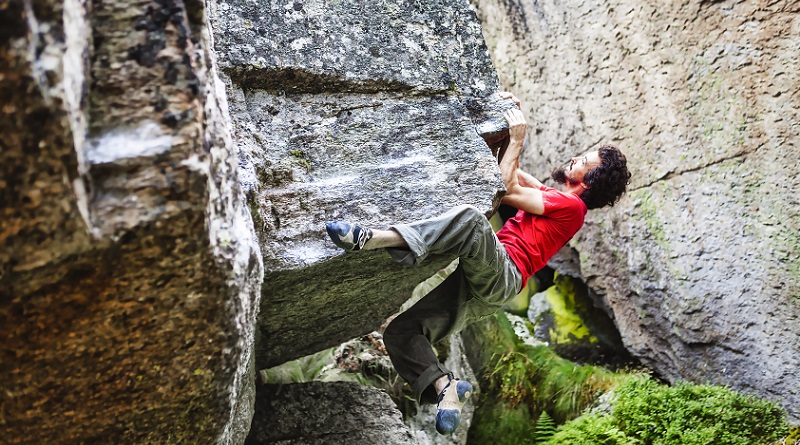
Did you know your legs are roughly three times as strong as your arms? Leg muscles also heal quicker than those in your arms. This means that learning the heel hook basically enables you to tap into the power of having a third arm, which moreover is many times as strong as your regular arms!
That’s a real asset to have on a difficult climbing route, and also one of the reasons why the heel hook is a quintessential part of the climbing technique canon.
A quick word on climbing shoes
Not all climbing shoes are created equally, and it is certainly the case that some of them have been made with the heel hook in mind more than others.
Good climbing shoes for heel hooking will have a hard, sturdy heel on them. Sometimes they’ll even have a texture so that you get extra traction. One of my favourite climbing shoes is the Scarpa Vapor V, which has a nice ball-shaped study heel – and I love it for heel hooking my way out of a climbing problem.
Of course, a lot of this does come down to personal preference. There are climbers that prefer a softer heel so that they can feel the rock better. Ultimately, it is up to you to find your prefered confluence of climbing technique and gear.
Final Thoughts
So there you have it! You now know what a heel hook is. You’ve also learned how to perform it, and why it is such a crucial technique to master if you want to get better at climbing.
But, there is ONE thing I forgot to mention….
Go practise!

